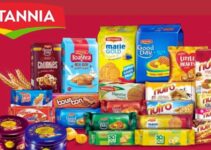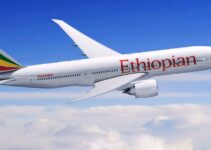AB InBev (Anheuser-Busch InBev) is a beer-brewing Belgian (Belgium) multinational company. The beverage company came into existence in 2008 as a result of the acquisition of Anheuser Busch by InBev. Today, we’ll discuss the SWOT analysis of AB InBev; it outlines strengths and weaknesses; opportunities, and threats that the company has to face; as a business strategy analysis example company.
Products and services portfolio of AB InBev
- Soft drinks (non-alcoholic)
- Beer
- Alcoholic beverages
- Breweries
Subsidiaries of AB InBev
- Grupo Modelo
- InBev
- Anheuser-Busch
Statistical facts and figures of AB InBev
- Annual revenue – 159.38 billion USD (2023)
- Net income – 6.891 billion USD (2023)
- Employees – 154,540
- Asset net worth – 219.3 billion USD (2023)
Competitors of AB InBev
- Tsingtao Beer
- CR Beer
- Constellation Brands
- Diago
- Carlsberg Group
- Pabst Brewing Company
- Heineken
- Molson Coors
The SWOT analysis of AB InBev would analyze the internal strengths and weaknesses of the company; and external opportunities and threats that the brand has to face. Here’s AB InBev SWOT analysis as a business strategy analysis example company as follows;
Strenghts of AB InBev
Some of the main internal strengths in the AB InBev SWOT analysis of brewer business example company as business strategy analysis are as follows;
Large Network
AB InBev (Anheuser-Busch InBev) has established a very large network and the alcoholic beverage company is operating its business in over 150 countries across the globe. the worldwide network helps the company to increase its revenue, sales, and profitability.
Brand Recognition
According to the Forbes Global 2000, AB InBev (Anheuser-Busch InBev) achieved the 72nd position among the world’s top 2000 companies. The brand recognition further strengthens the company’s brand positioning in the global market.
Product Portfolio
AB InBev (Anheuser-Busch InBev) has developed a very large product portfolio comprising of over 630 beer brands. The company is offering beer and alcoholic beverages under different brand names in various countries across the world. It allows the beer brand to serve a wide range of customers with unique tastes and different offers of every beer brand.
Acquisitions
AB InBev (Anheuser-Busch InBev) has acquired various alcoholic beverage and beer companies over the years. In fact, the current company AB InBev is also the result of acquisition. It is a great strategic approach to moving your business forward and expanding the market. The beer brand has done it successfully.
Large Distribution Network
AB InBev has established a very large supply chain and distribution network. The company collaborates with various suppliers in various countries to ensure the smooth supply of raw materials in its breweries. However, the large distribution network helps the company to make its products available in countries worldwide.
Marketing
AB InBev (Anheuser-Busch InBev) employs various media channels like TV, radio, print media, digital marketing, and social media platforms for the promotion of its platforms. Along with marketing, the beer brand also sponsors various mega sporting events and they help the company to give significant brand exposure.
Sustainability Initiative
AB InBev has made a strong commitment to environmental sustainable by procuring sustainable materials, tools, equipment, and renewable energy technology. It allows the company to achieve operational efficiency with limited impact on the environment.
Weaknesses of AB InBev
Some of the main internal weaknesses in the AB InBev SWOT analysis of brewer business example company as business strategy analysis are as follows;
Controversy
The US Justice Department investigated AB InBev’s operations in 2015 and found out that the company is buying all major distributors in the regions, and leaving none for competitors. Such types of practices are negatively impacting the company’s reputation in the market.
Bribery Charges
AB InBev had paid the legal fine and penalty of 6 million USD to the US Security and Exchange Commission under the bribery changes and silencing the whistleblowers. Heavy fines and legal penalties are decreasing the company’s revenue and profitability.
Heavy Reliance on Beer
It is no doubt AB InBev (Anheuser-Busch InBev) has a very large product portfolio, and beer is its main product. In fact, the company is heavily relying on beer sales for its overall revenue and profitability. Over-reliance on one product is not a good business strategy for the company.
Complicated Organization Structure
AB InBev has roundabout 650 brands under its portfolio and the company has acquired a wide range of companies. They all have different organizational structures and it slows down the company’s strategic decision-making process. This is because bringing all the parties, partners, and stakeholders on board is a highly time-consuming task.
Opportunities for AB InBev
Some of the main available opportunities in the AB InBev SWOT analysis of brewer business example company as business strategy analysis are as follows;
Healthy Dietary Trends
The healthy dietary trends are increasing among the customer market. The customers prefer to consume non-alcoholic beverages and they are choosing healthy drinks and beverages. However, such types of trends are decreasing the sale of the company’s beer.
Market Expansion
There is no doubt AB InBev (Anheuser-Busch InBev) has covered a significant portion of the customer market, but the room for market growth is still there. The company should further expand its business in the new regions and target new segments of the customer market. It amplifies the company’s growth, sales, and market share.
Strategic Alliance
AB InBev should develop strategic alliances and partnerships with various other beer manufacturing companies and craft beer companies. The joint venture not only helps the company to increase its portfolio, offer unique tastes to the customers; and enter new markets by covering more ground with coordination and collaboration.
Tech Development
AB InBev (Anheuser-Busch InBev) should invest resources in technological development, improving the web platform, and delivery service, and procuring the latest technological tools and equipment. As a result, it brings efficiency to the company’s operation and reduces the wastage of resources.
Threats to AB InBev
Some of the main potential threats in the AB InBev SWOT analysis of brewer business example company as business strategy analysis are as follows;
Competition
The beer and brewery market has become highly competitive in recent years. There are multiple companies operating their business in the beer industry. Their market presence has decreased the company AB InBev’s market share to a great extent.
Regulations
The beer brand AB InBev (Anheuser-Busch InBev) needs to comply with government regulations and requires approval from the Food and safety department. While complying with standard protocols and requirements, it amplifies the beer company’s operational cost significantly.
Ethical Practices
In order to avoid heavy fines and legal penalties, AB InBev (Anheuser-Busch InBev) should engage in ethical practices. It means no bribery and no monopoly. Such types of practices are jeopardizing the company’s reputation in the global market.
Conclusion: AB InBev SWOT Analysis Example Company |Brewery Business SWOT Analysis of AB InBev |Business Strategy Analysis
After an in-depth study of the SWOT analysis of AB InBev (Anheuser-Busch InBev); we have realized that AB InBev is the world’s leading beer brewing company. If you are learning about AB InBev SWOT analysis example company; then you should keep in mind the abovementioned internal strengths and weaknesses; external opportunities and threats as brand strategy analysis.

Ahsan Ali Shaw is an accomplished Business Writer, Analyst, and Public Speaker. Other than that, he’s a fun loving person.


